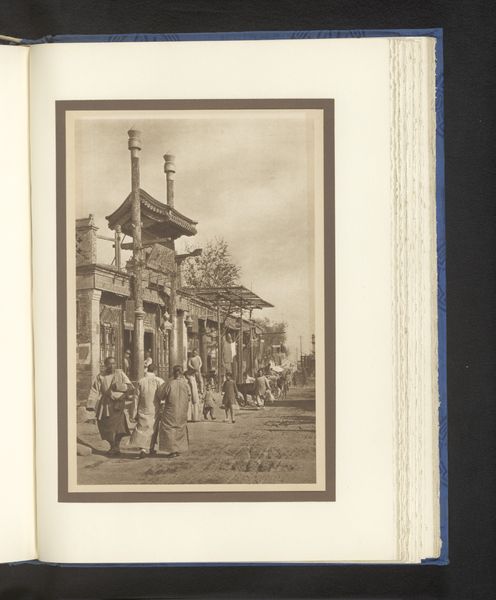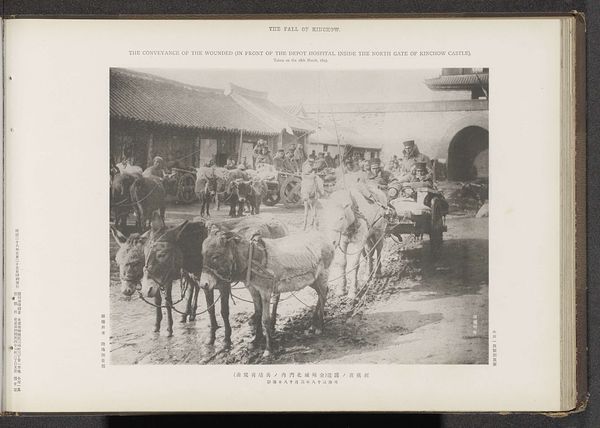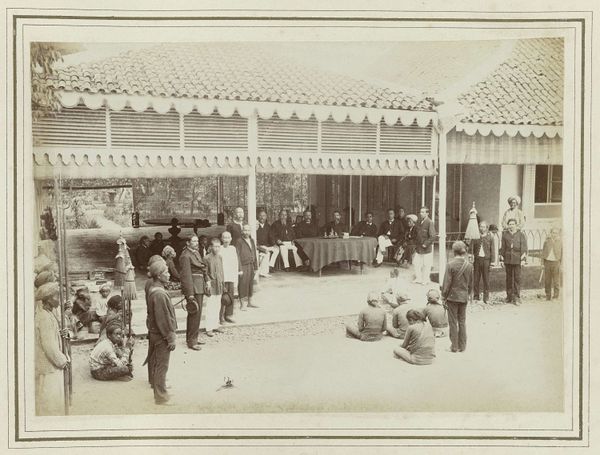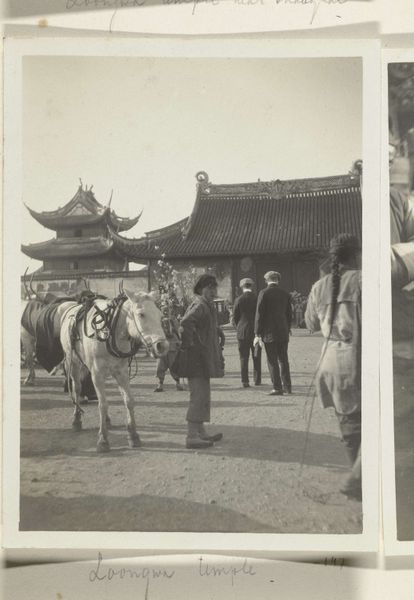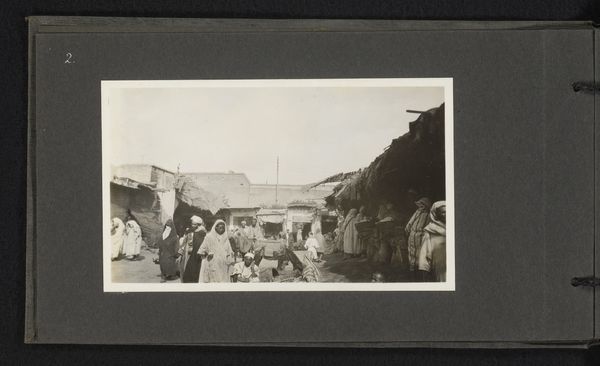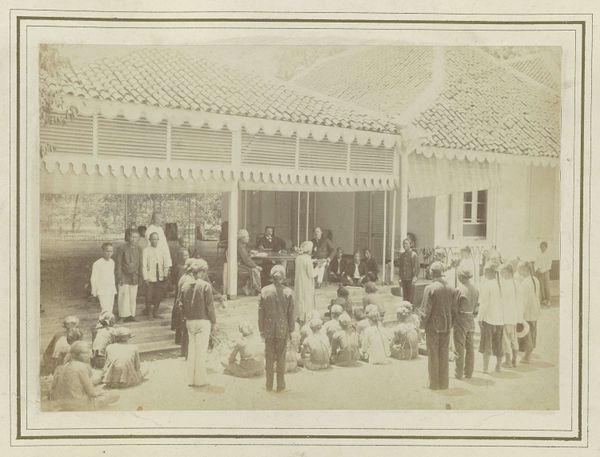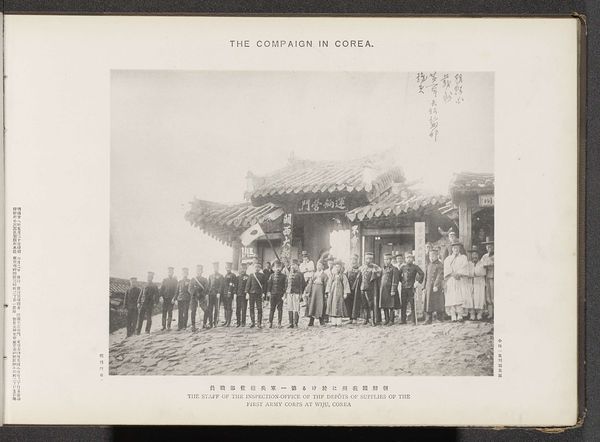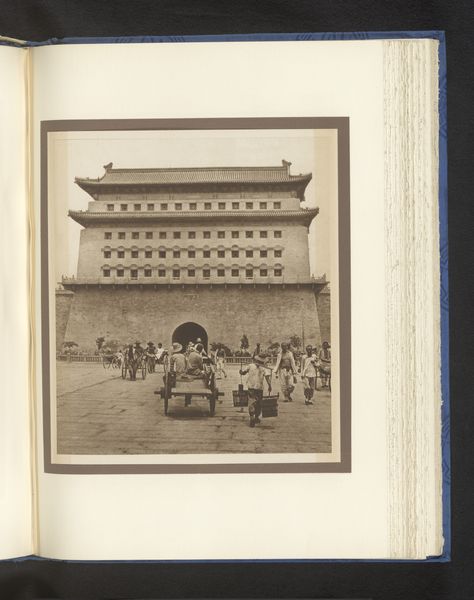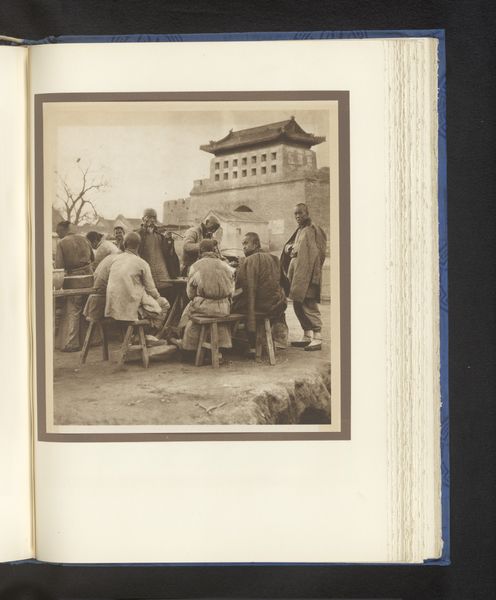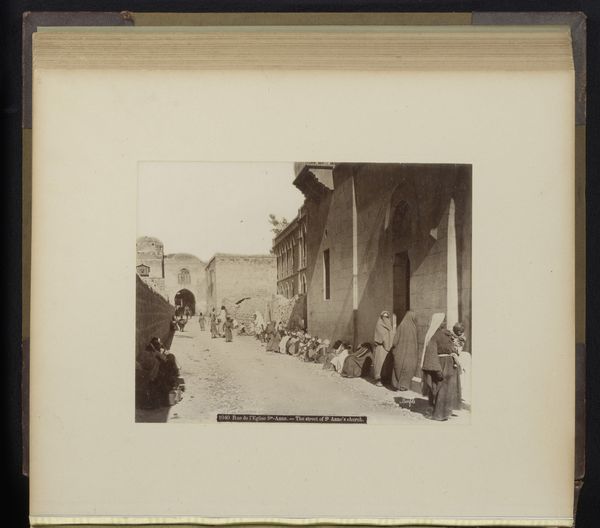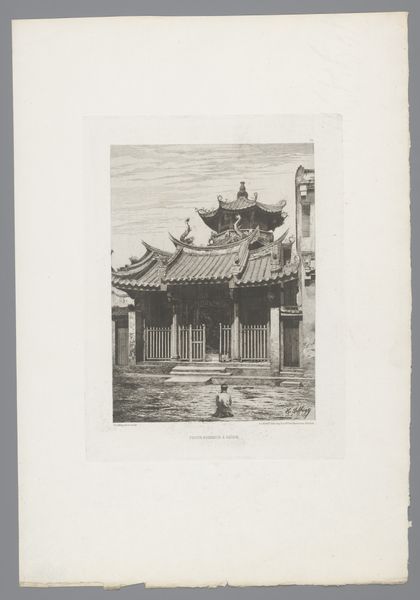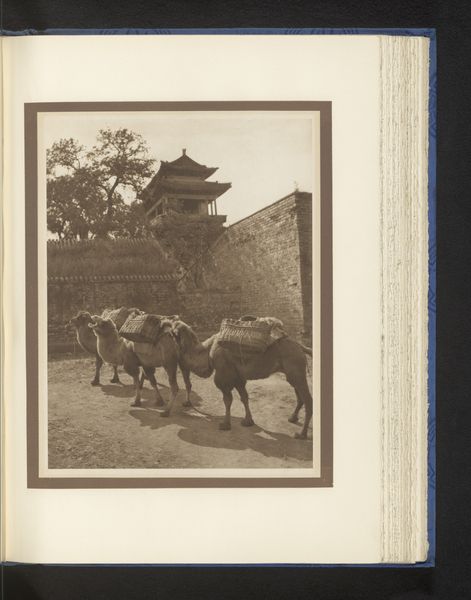
Giving food to the Chinese poor in front of the gate of the late governor's office Possibly 1894
0:00
0:00
print, photography, gelatin-silver-print
#
portrait
# print
#
asian-art
#
landscape
#
photography
#
gelatin-silver-print
#
realism
#
building
Dimensions: height 195 mm, width 275 mm
Copyright: Rijks Museum: Open Domain
Curator: Let’s delve into this compelling gelatin-silver print, believed to be from 1894, titled "Giving food to the Chinese poor in front of the gate of the late governor's office." The image depicts what appears to be a food distribution in front of a traditional building. What strikes you first? Editor: The raw, documentary feel. It’s all about the social act, the material exchange of food and how that gets managed at this place of government. You can almost feel the weight of those bowls and packages. Curator: Indeed. Considering the historical context, potentially during a time of famine or hardship, this image speaks volumes about social inequalities and power structures. The composition positions the official building in the background, silently witnessing the event. How do you see the roles of those depicted in the image? Editor: It feels carefully staged, though presented as realism. The visible structures are crucial here: bowls, cloth sacks, the architecture and quality of clothing which reveal levels of lack or access to materials for daily life and the distribution of necessities. There are different social roles— servers, guards— and levels of poverty, that the material realities powerfully communicate here. Curator: Precisely. I also interpret this as a very critical gaze at late 19th-century philanthropy and power, because the very act of capturing the image is a choice about which realities become art or spectacle, so there is an ethical dimension worth discussing further. The work makes one contemplate the visual vocabulary of poverty and visibility and think critically about historical responsibility to care and advocate, despite obvious divisions of labor and capital. Editor: This focus on distribution reveals more when considering the location being 'the late governor’s office,’ almost implying a shift or potential vacuum of resources. This location underscores my initial emphasis about access, the building, and even in this representation. Curator: Definitely. It raises questions about governance, access to food resources, social justice and perhaps even what constitutes ethical photography, especially regarding class dynamics. Editor: Considering all, its strength resides in its capacity to show and remind about complex systems which surround even simplest material processes such as donation or help. Curator: I agree completely. It’s a stark reminder of the interweaving threads of culture, politics, and materiality that can inform social dynamics.
Comments
No comments
Be the first to comment and join the conversation on the ultimate creative platform.
